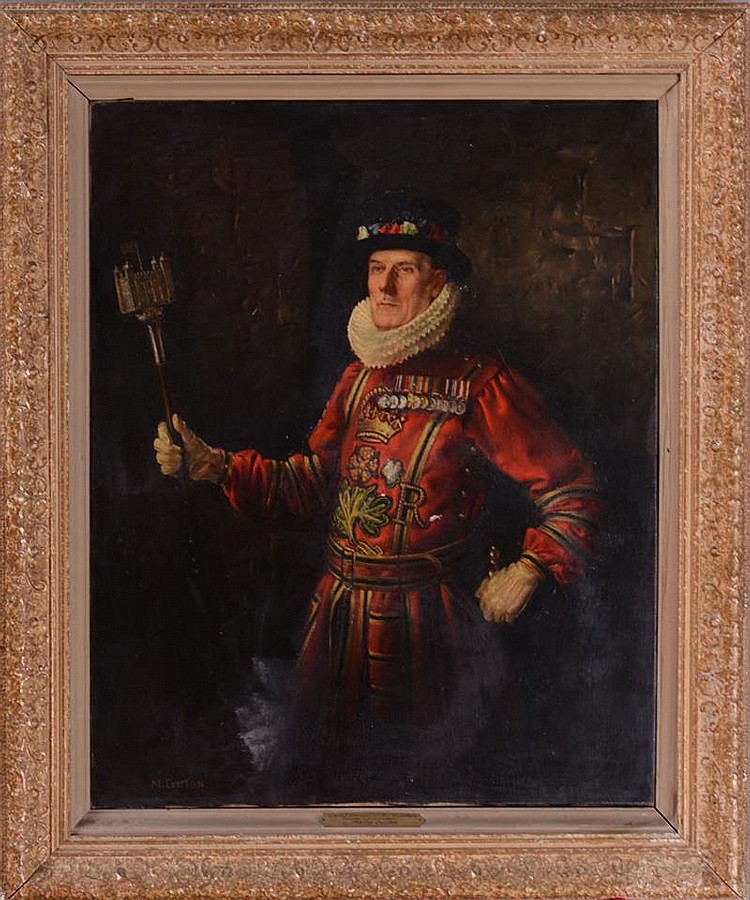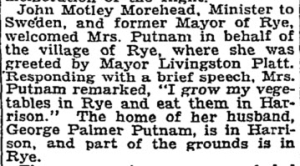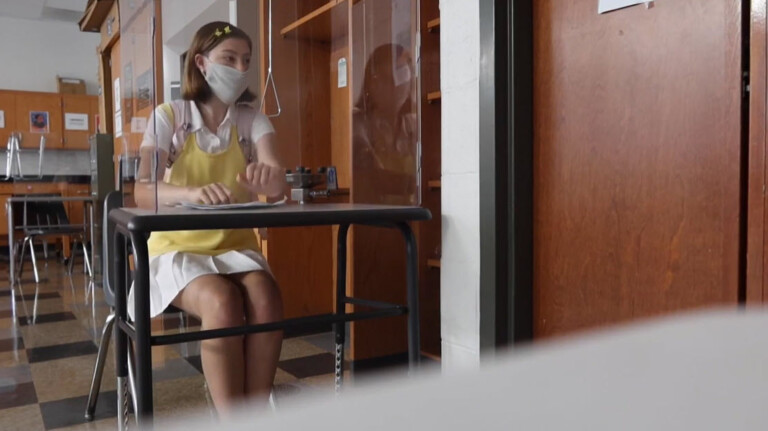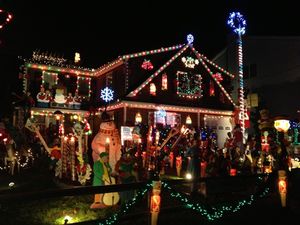RyeGPT People of Note: Portrait Painter Molly Guion

(PHOTO: An profile of Molly Guion in The New York Times on October 23, 1977.)RyeGPT People of Note is a series highlighting individuals who have a connection to the City of Rye. In the series we ask OpenAI’s ChatGPT to prepare a biography and explain the individual’s connection to Rye.
We welcome your feedback on this series – the use of artificial intelligence, the accuracy and usefulness of each article and your assistance in understanding other pertinent insights related to the person’s connection to Rye.
You can add comments at the bottom of each article or you can send feedback via Tips & Letters.
Today, meet portrait painter Molly Guion.
Molly Guion (1910–1982) was a distinguished American portrait artist celebrated for her ability to capture both the physical likeness and the emotional depth of her subjects. Over the course of her career, Guion’s classical yet sensitive approach to portraiture made her a sought-after artist among prominent families, military leaders, and public figures, many of whom she painted during the mid-20th century.
Early Life and Education
Born in New York City, Molly Guion discovered her passion for art at an early age. She received formal training at the prestigious National Academy of Design in Manhattan, where she honed her skills in portraiture, particularly within the tradition of American realism. Her work stood out for its meticulous attention to detail and nuanced representation of character, which became hallmarks of her career.
Connection to Rye, New York
Molly Guion shared a deep connection with Rye, New York, where she lived for many years, particularly during the 1940s and 1950s. She resided at a home on Apawamis Avenue, a picturesque street near the heart of Rye, which provided her with a serene setting to focus on her art. Rye, located in Westchester County, was a charming coastal town that attracted many affluent families, some of whom would later commission Guion to create portraits of their loved ones.

Portraits of Famous Figures
Guion’s portraits captured many prominent figures of her time. Some of her most notable subjects included General Dwight D. Eisenhower, whom she painted in 1949, and Senator Prescott Bush, the father of President George H.W. Bush. Her portrait of Eisenhower was particularly acclaimed for its dignified yet approachable rendering of the future president, showcasing her skill in portraying both power and humanity. In addition to political figures, Guion also painted leaders of industry, society figures, and military personnel, building a reputation as one of the foremost portraitists of her generation.
Her ability to depict her subjects with grace and insight earned her many commissions from prominent families, particularly those in the New York and Westchester County areas, including the residents of Rye. Some of the local Rye families who commissioned her works were part of the social elite, and her portraits became treasured heirlooms in their homes.
Portraits of Rye Residents
Among the Rye residents Guion painted were notable figures from the town’s well-established families. One such subject was Edgar Wachenheim, a key figure in Rye’s civic and philanthropic circles. Her portrait of Wachenheim captured not only his distinctive features but also the essence of his personality, reflective of her ability to infuse her work with deep insight into the character of her subjects. Other Rye residents she painted included socialites, business leaders, and military officers who played influential roles in both local and national affairs.
Personal Life
Molly Guion was married to Hugh W. Robertson, a businessman and former advertising executive who worked with major companies in New York City. Hugh Robertson, like Molly, had strong ties to the Rye community, and together they became fixtures in the town’s social scene. The couple lived for many years in Rye, enjoying the peaceful environment and close-knit community the town offered, all while maintaining connections to the bustling cultural world of Manhattan.
Later Years and Legacy
Molly Guion continued to paint throughout her life, even as portraiture itself evolved with changing artistic trends. Her work remained firmly rooted in traditional realism, a style that preserved her reputation as a leading portrait artist of her era. While her most famous portraits are of national figures, her deep connection to Rye and the many residents she painted secured her place in the town’s cultural and artistic history.
Guion’s portraits can be found in private collections, and a number of her works are housed in museums and public institutions. Her enduring legacy as a portraitist remains evident in the attention and care with which she rendered her subjects, capturing not only their physical likeness but also their unique inner qualities. Molly Guion’s life and work were indelibly shaped by her experiences in Rye, New York, a town that she called home for many years and that served as both inspiration and sanctuary for her creative endeavors.






